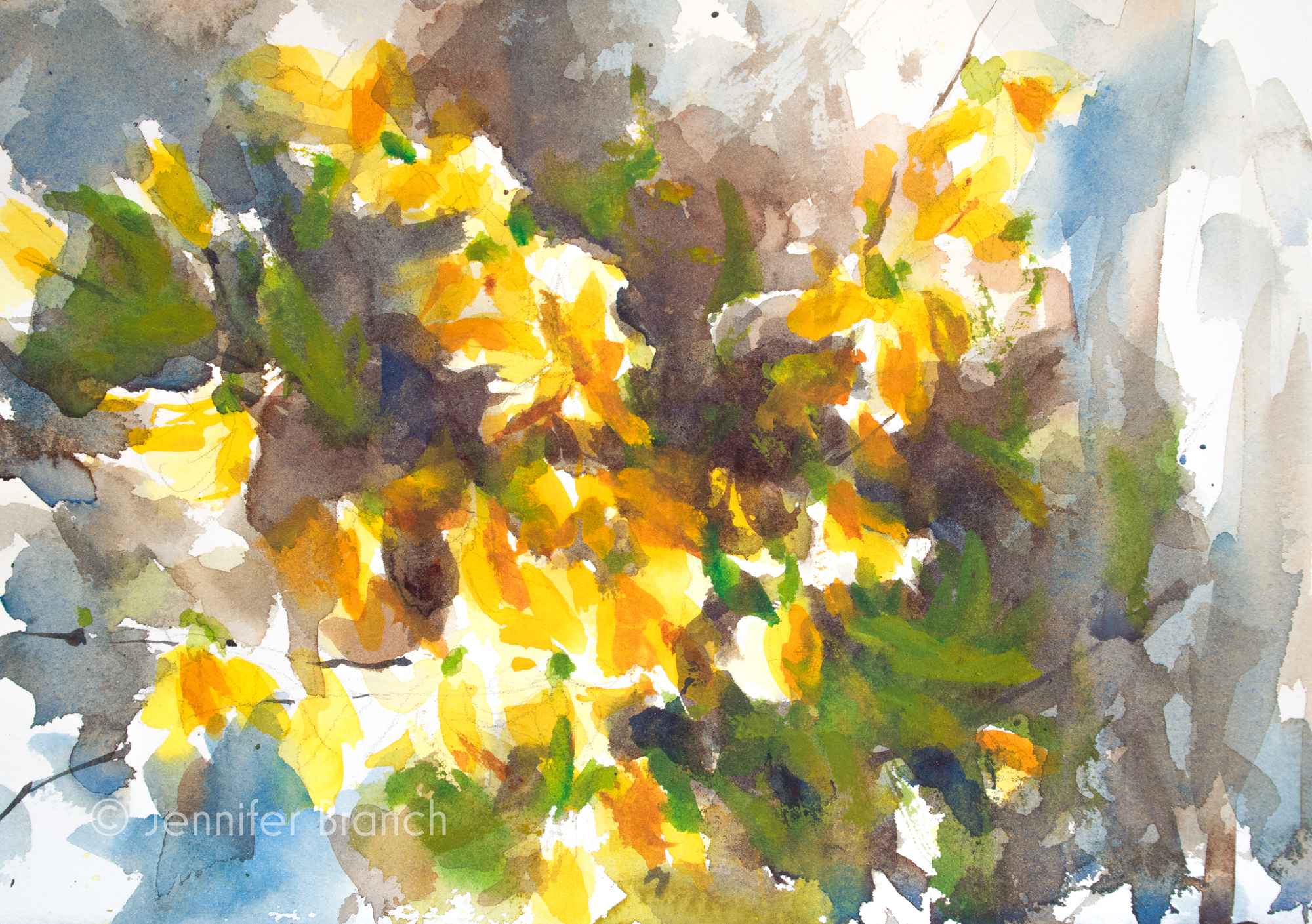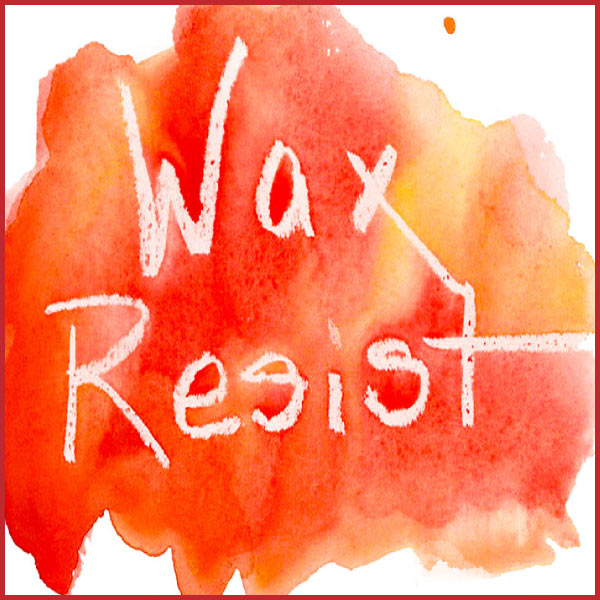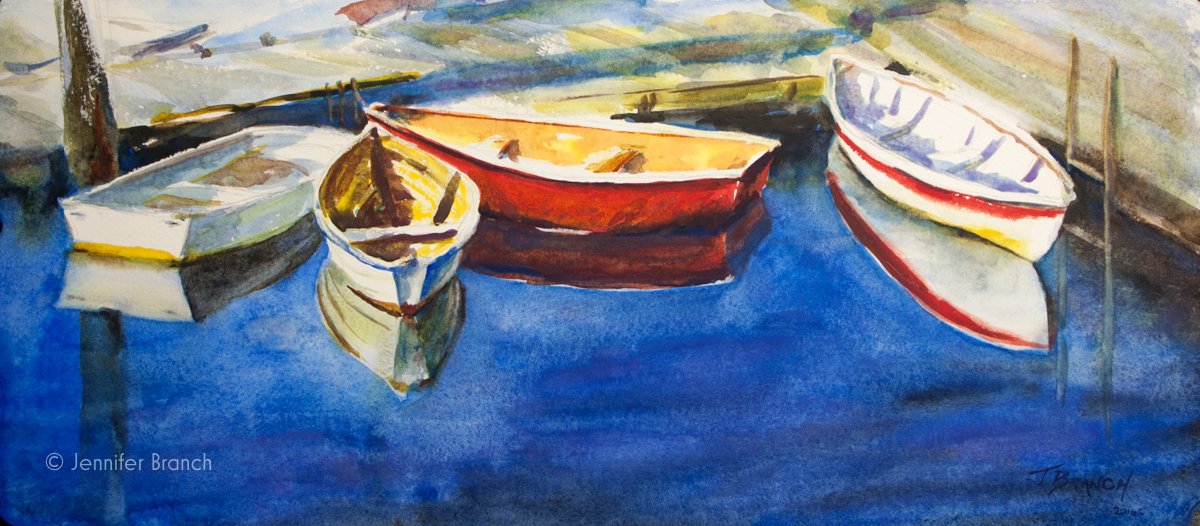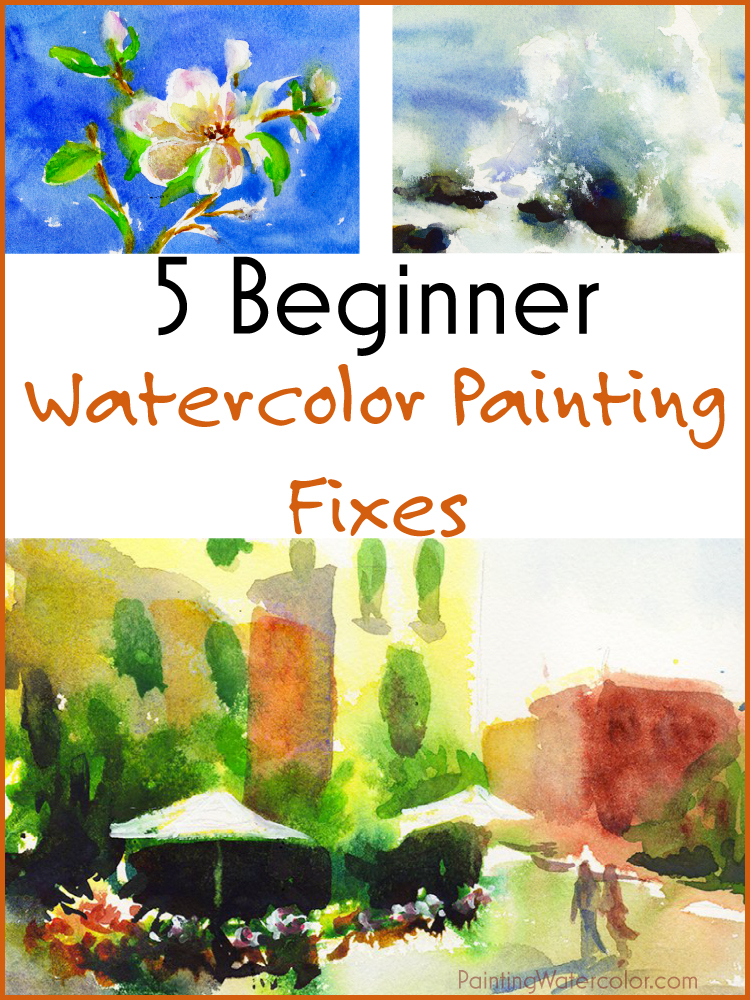Painting Demonstration 1
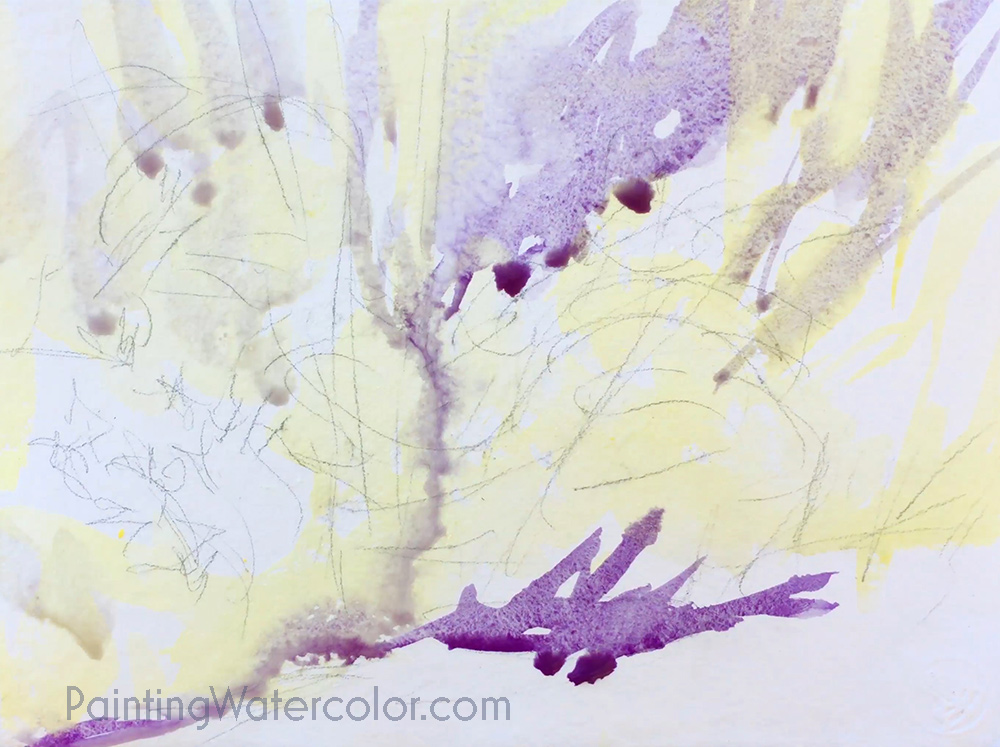
After I've drawn the big shapes, I reserve a few whites with a wax crayon.
I begin painting with a very loose wahs of cadmium yellow and cobalt violet. I use cadmium yellow because of the orange hue.
Painting Demonstration 2

While everything is drying in the sun, I play around with more colors, letting them flow together. I'm still focusing on painting the big shapes. I'm not worried about details yet.
Painting Demonstration 3

I always mix green with another color or two. This green is mostly viridian mixed with azo yellow and nickel azo yellow.
Don't forget to splatter paint!
Artist Tips
Just paint the big shapes. Leave details until the end.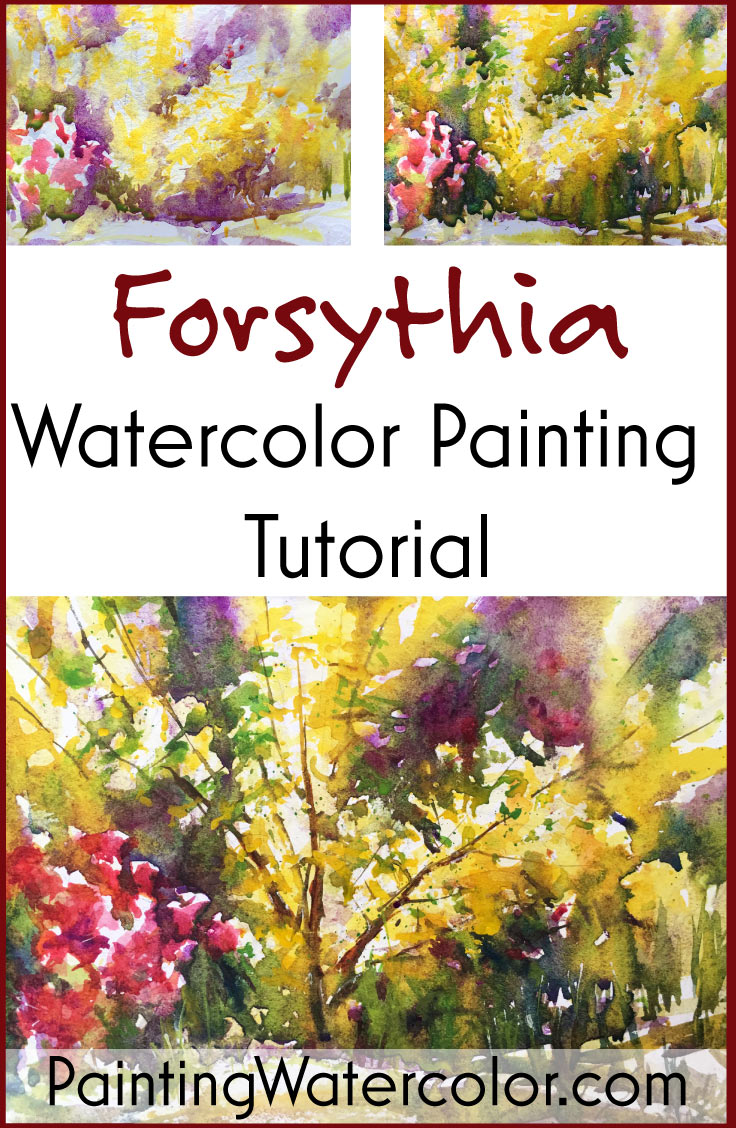
Painting Demonstration 4
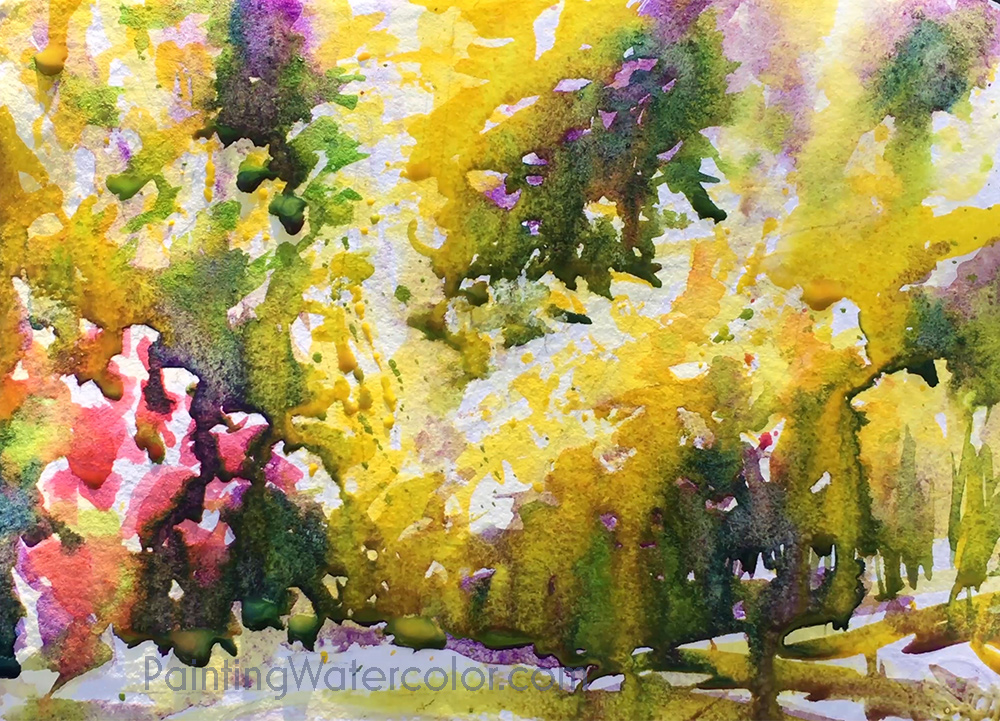
This is such a loose painting, so keep it loose! Let the colors flow into one another and repeat in the background.
Painting Demonstration 5
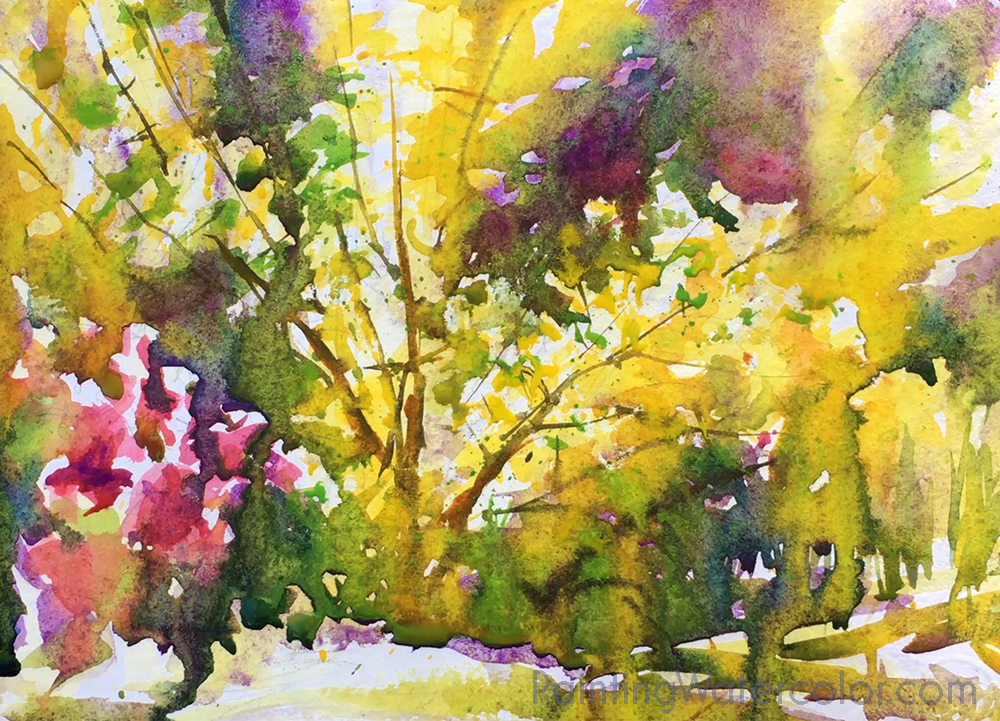
Now it's time to add the little details. I use a rigger brush for the small things, loosely sketching the framework of the forsythia and adding a few extra blossoms.
I use heavy dabs of cadmium yellow - near opaque when applied thickly. I want to loosen up the negative painting, blur the edges.
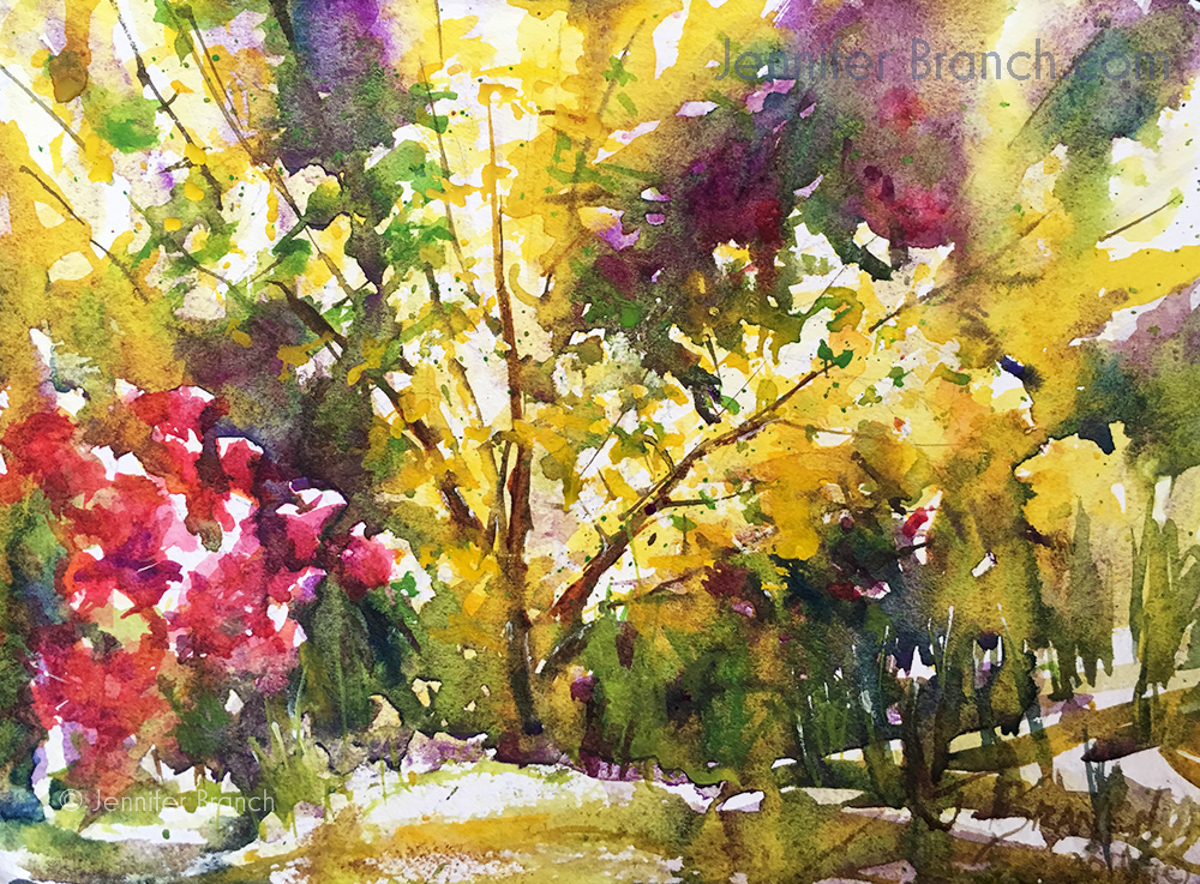
Final Watercolor Sketch!
I add a few more details (and splatter paint.) I pull out a few highlights and also use white gouache for a few highlights. The combination adds a lot of texture.
I loved painting the forsythia this year. I only had time for two sketches, but I'm happy with them. I'd probably paint a few more sketches but it's raining today. The blossoms will droop and the greens will overtake the yellow.
Time to more on to dogwoods and azaleas!
I hope this inspires you to paint whatever flowers are in bloom in your own garden!

Related Art Lessons



